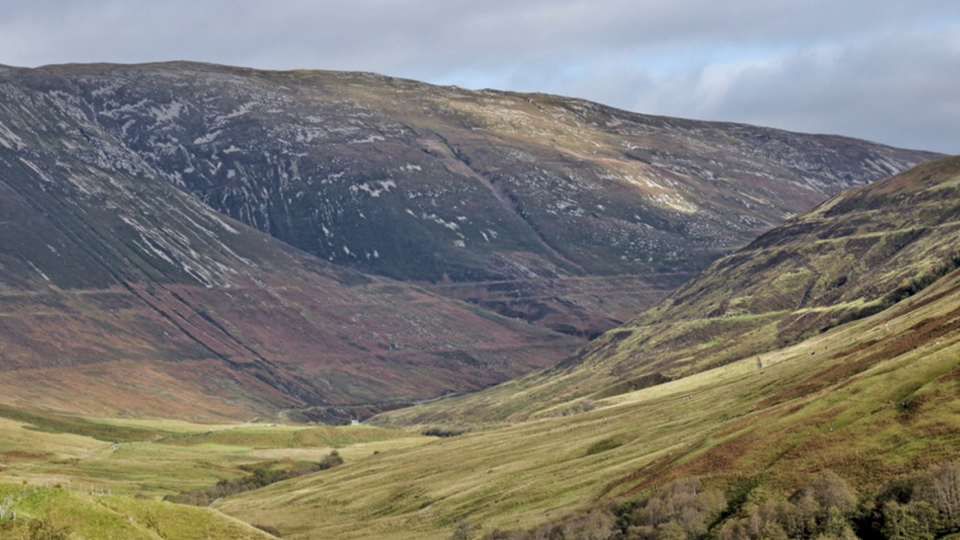
The Parallel Roads of Glen Roy
At the end of September we were driving up to Kingussie in the Cairngorms National Park. We were enjoying the spectacular scenery of moorland and mountains, scored by fast-flowing peaty rivers and lochs fringed with tall pines. As we went through Roybridge I noticed a road sign pointing to the left, up a minor road. It said ‘Glen Roy Ice Age Landscape’.
This puzzled me for a bit. Wasn’t all of Scotland really an ice age landscape? Was there some kind of visitor centre up there? And then it dawned on me: it was pointing to the parallel roads of Glen Roy.
The parallel roads sound as if they might be man-made, and that’s because in ancient times there was no other plausible explanation for them. They are, however, entirely natural, and they are considered to be one of the most iconic features of Scotland’s landscape. We decided to go and have a look.
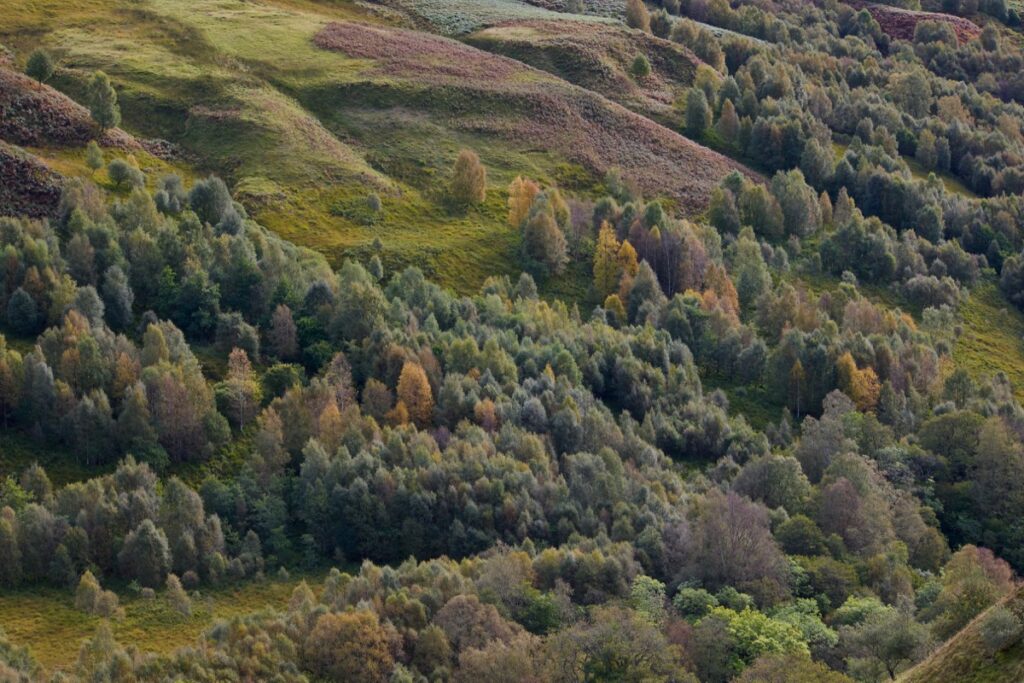
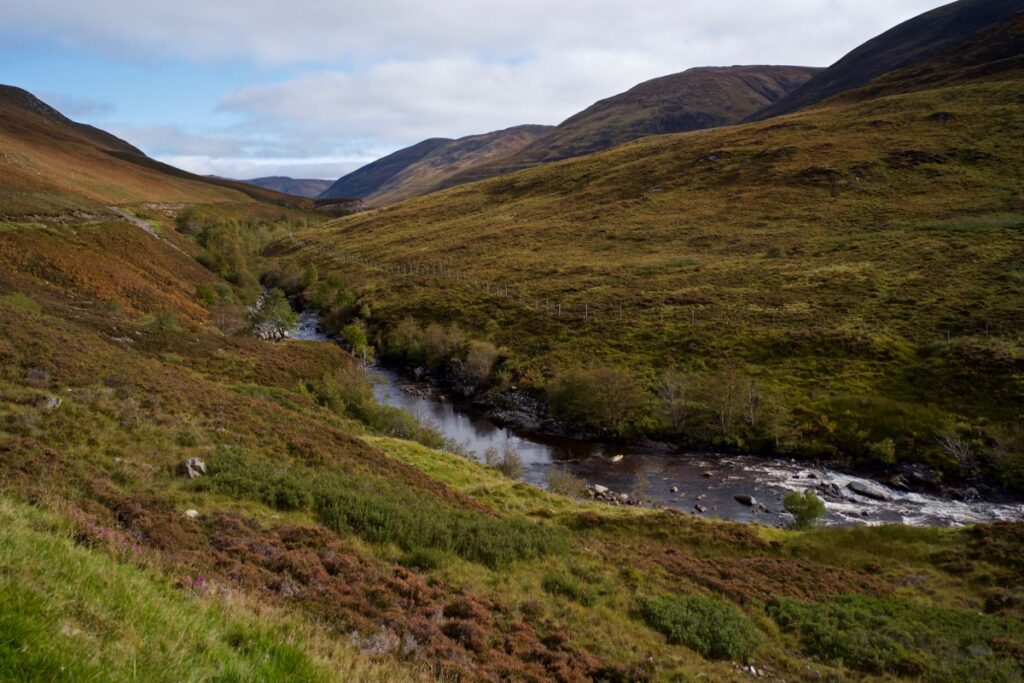
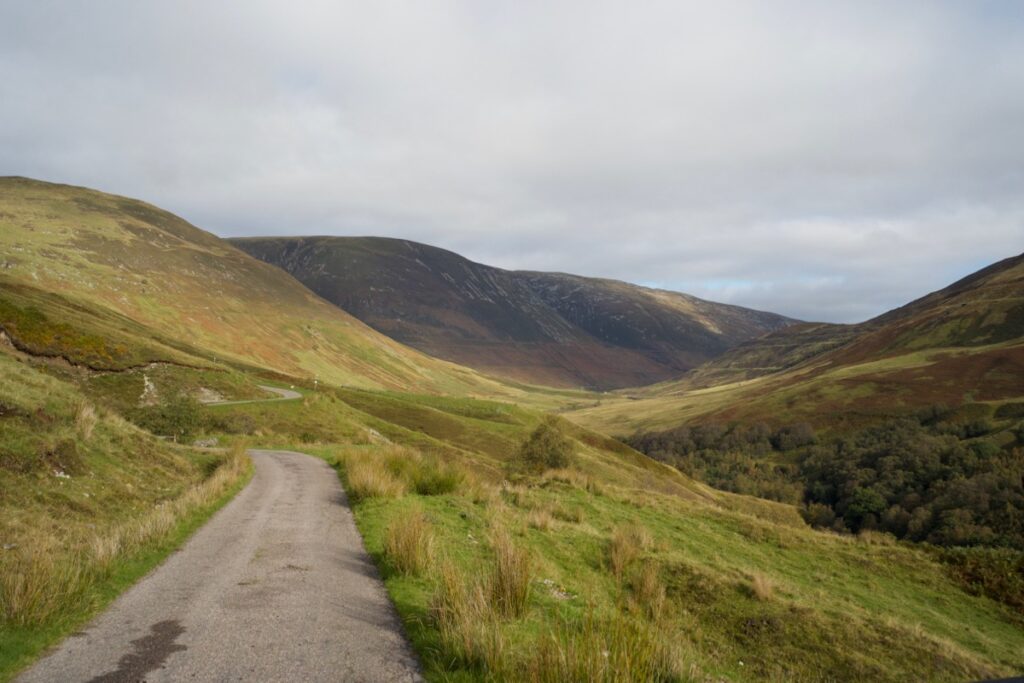 The single-track road from Roy Bridge quickly left the scattered houses behind and climbed steadily up through mixed woodland of willow and hazel. The glen dropped away to our right, with taller trees hugging the river. A few flashes of gold – birch, probably, or aspen – glowed among the conifers. But I wasn’t really looking at trees – I was scanning the hillsides for these famous ‘roads’, and hoping that they would live up to their hype.
The single-track road from Roy Bridge quickly left the scattered houses behind and climbed steadily up through mixed woodland of willow and hazel. The glen dropped away to our right, with taller trees hugging the river. A few flashes of gold – birch, probably, or aspen – glowed among the conifers. But I wasn’t really looking at trees – I was scanning the hillsides for these famous ‘roads’, and hoping that they would live up to their hype.
In fact, they were hard to miss. Relief turned quickly to astonishment. On both sides of the glen, the slopes are marked with two or three continuous rows of long, thin and unwaveringly straight lines. They follow every fold and spur as faithfully as if some giant cartographer had drawn contours on the hillside. As we got closer, we could see that they were in fact narrow shelves, with flat surfaces perhaps a couple of metres across. You can see why they were called roads. But how were they made? And why?
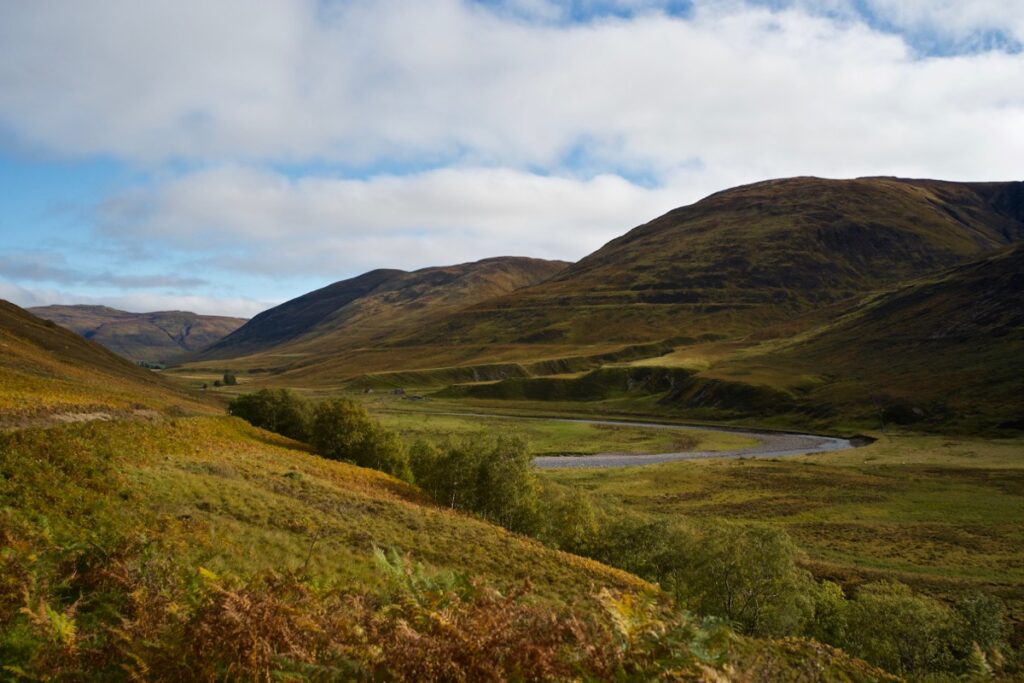
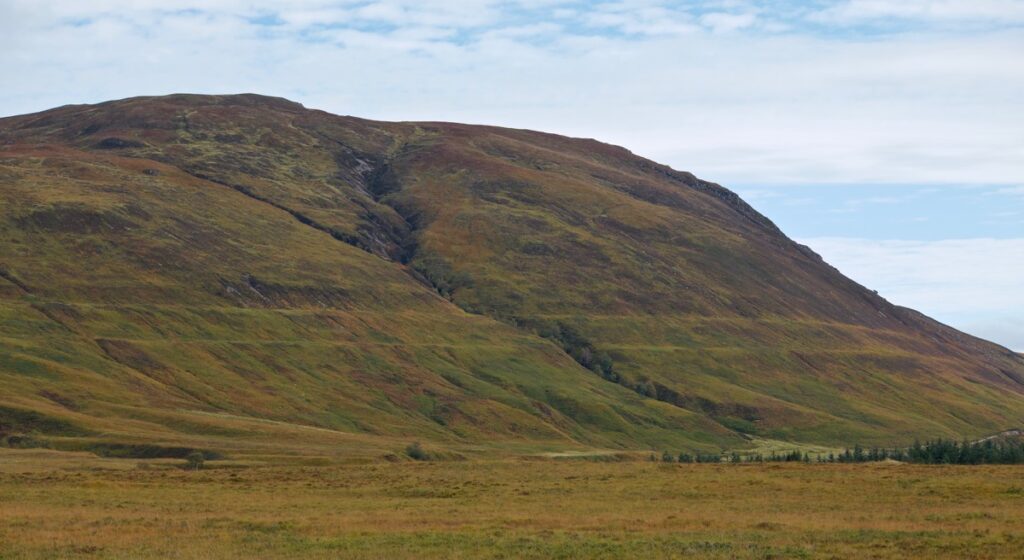
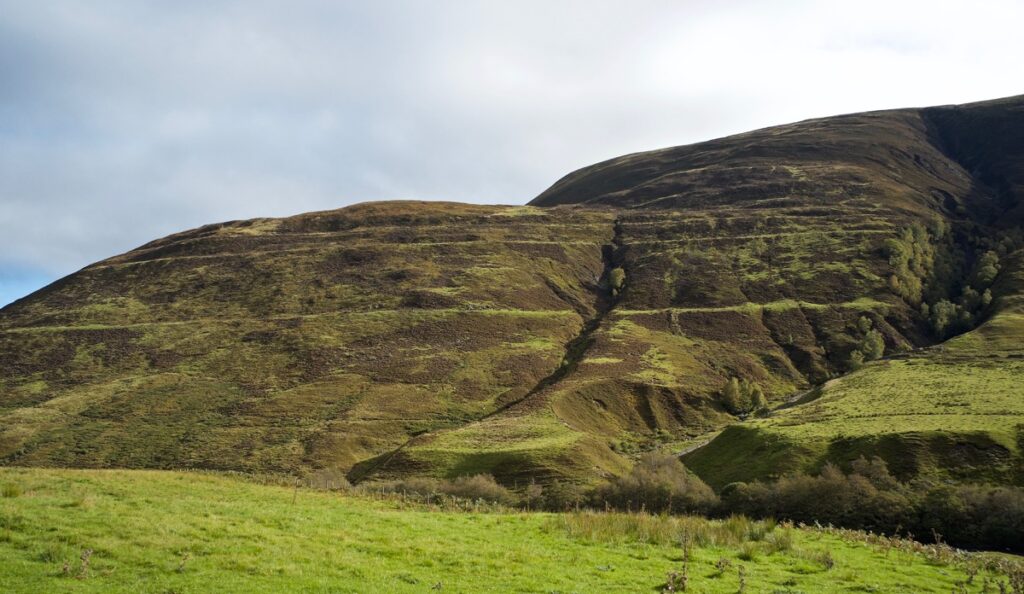
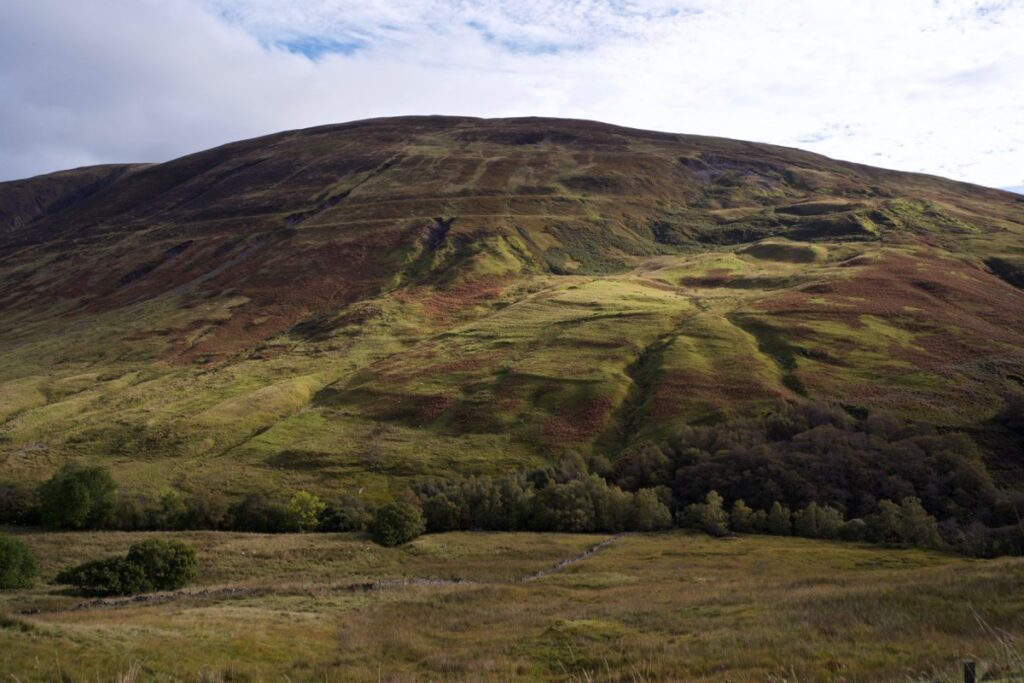 According to our early ancestors, who revered the deeds of their warrior-gods, these were the paths followed by the legendary fighter Fionn MacCumhaill and his band of huntsmen, the Fianna. In Irish mythology, Fionn was a true superhero who had acquired his powers as a young lad by accidentally tasting the flesh of the Salmon of Knowledge. These salmon had fed on hazel nuts that dropped into a sacred pool, and the druids believed that anyone who ate the salmon would acquire the hazel’s wisdom.
According to our early ancestors, who revered the deeds of their warrior-gods, these were the paths followed by the legendary fighter Fionn MacCumhaill and his band of huntsmen, the Fianna. In Irish mythology, Fionn was a true superhero who had acquired his powers as a young lad by accidentally tasting the flesh of the Salmon of Knowledge. These salmon had fed on hazel nuts that dropped into a sacred pool, and the druids believed that anyone who ate the salmon would acquire the hazel’s wisdom.
Fionn’s life was filled with passion and heroic adventure. You can perhaps imagine him galloping along the parallel roads in angry pursuit of the fleeing lovers Diarmuid and Gráinne, who had betrayed him at his own betrothal feast, or searching desperately for his lost love, Sadhbh, whom a dark-hearted druid had turned into a deer.
I have to admit that I love this version of events more than the true story.
But no, history is quite adamant that the parallel roads didn’t resound to the hoofbeats of Fionn or any of the other mythical heroes; nor (as another story claims) were they tracks used by Scottish kings on their hunting expeditions out of nearby Inverlochy Castle.
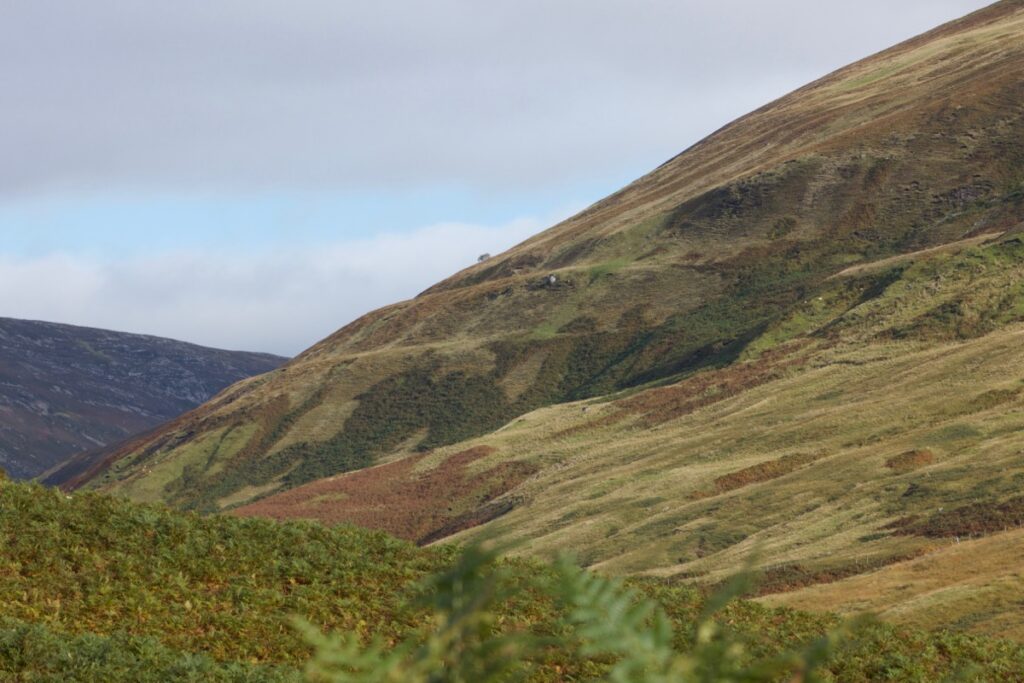
The ‘roads’ in profile
Glaciologists have worked out that they are, in fact, the margins of ice-dammed lakes, formed during the last glacial period, which began about 12,900 years ago. While the water has long since gone, the marks remain as evidence of water levels that persisted long enough for frost weathering and wave action to erode a distinct shoreline. The ‘roads’ occur at three different heights: 260, 325 and 350 metres. An ice field advancing from the west blocked the entrance to Glen Roy, thereby damming an already existing lake and causing it to rise to 260 metres. As it encroached further, and overflow routes were blocked off, the level rose to 325 metres and then 350 metres. Similar lakes were formed in adjacent glens.
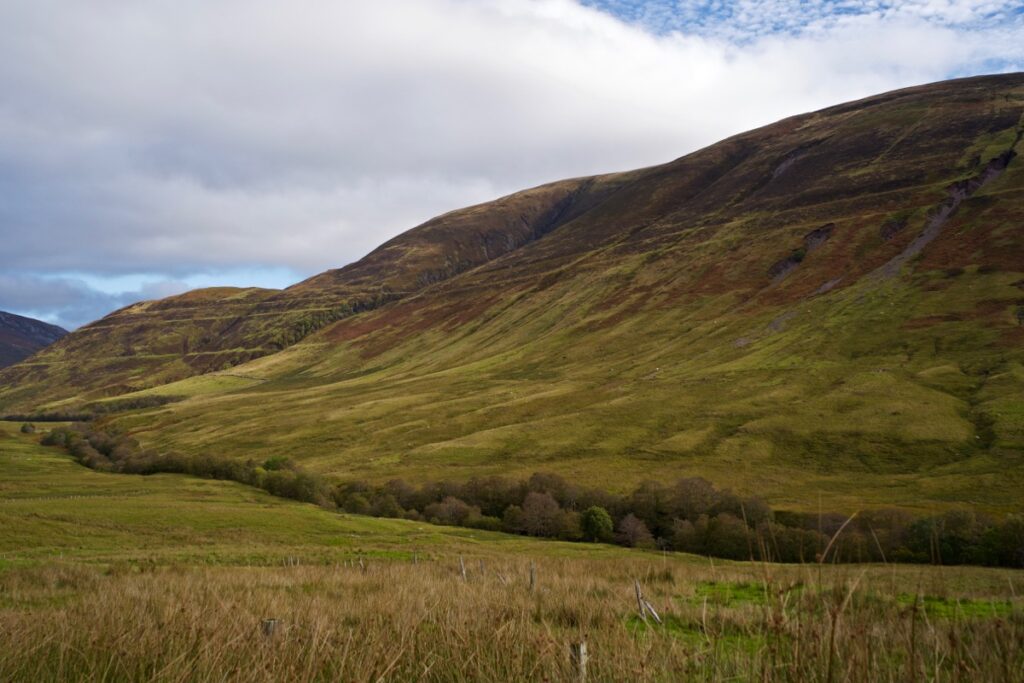 Then, as the climate became warmer around 11,500 years ago, the glaciers began to retreat and the lake levels dropped again – pausing at the same levels as the natural overflow routes were exposed. Scientists believe that, when the water reached the 260-metre level, the draining of the lake happened suddenly and dramatically as the water forced the glacier off its bed:
Then, as the climate became warmer around 11,500 years ago, the glaciers began to retreat and the lake levels dropped again – pausing at the same levels as the natural overflow routes were exposed. Scientists believe that, when the water reached the 260-metre level, the draining of the lake happened suddenly and dramatically as the water forced the glacier off its bed:
“The biggest glacier burst took place after the ice dam had retreated to Spean Bridge… at this stage, some 5 cubic kilometres of water are believed to have escaped under the ice to Loch Ness and into the sea at Inverness.”
‘Glen Roy – A Landscape Fashioned by Geology’ (BGS and SNH)
This must have been spectacular, to say the least.
We parked close to a conifer plantation right in the heart of the glen and walked along the track, past some farm buildings and across a stone bridge where the River Turret tumbled in its haste to join the River Roy. Here the river’s banks looked disproportionately tall, and curiously flat-topped and steep-sided. This is an alluvial fan, formed when a fast-flowing river suddenly loses impetus, slows down and drops its load of sediment, either on entering a wider valley or (I’m guessing) a body of water such as a lake. The river that formed this fan – and a similar one a little further south – must have been on a much bigger scale than the present one.
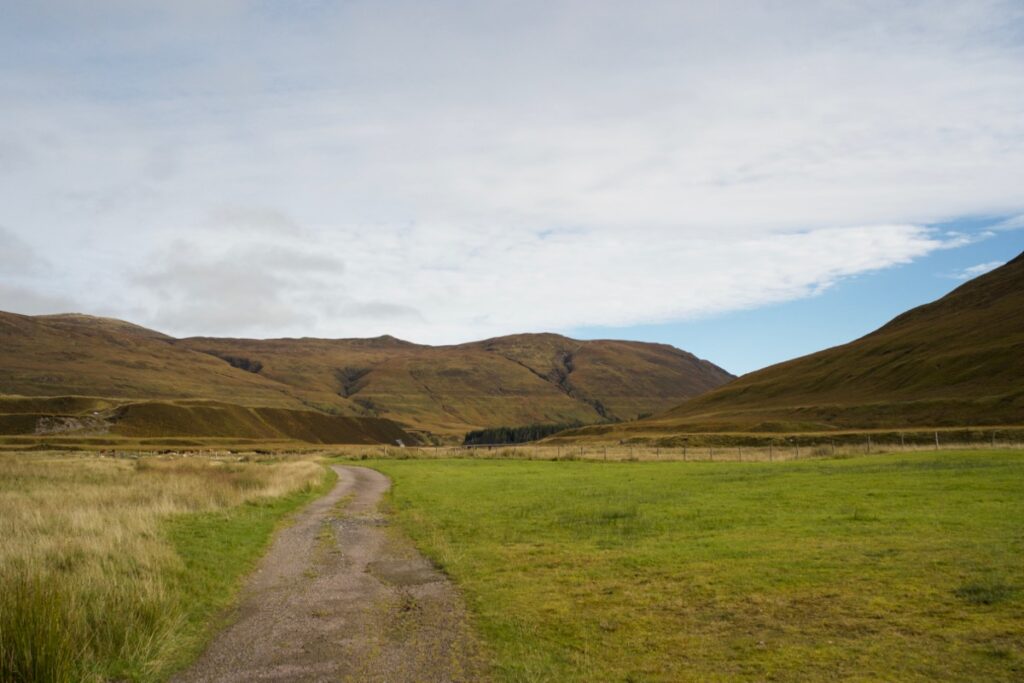
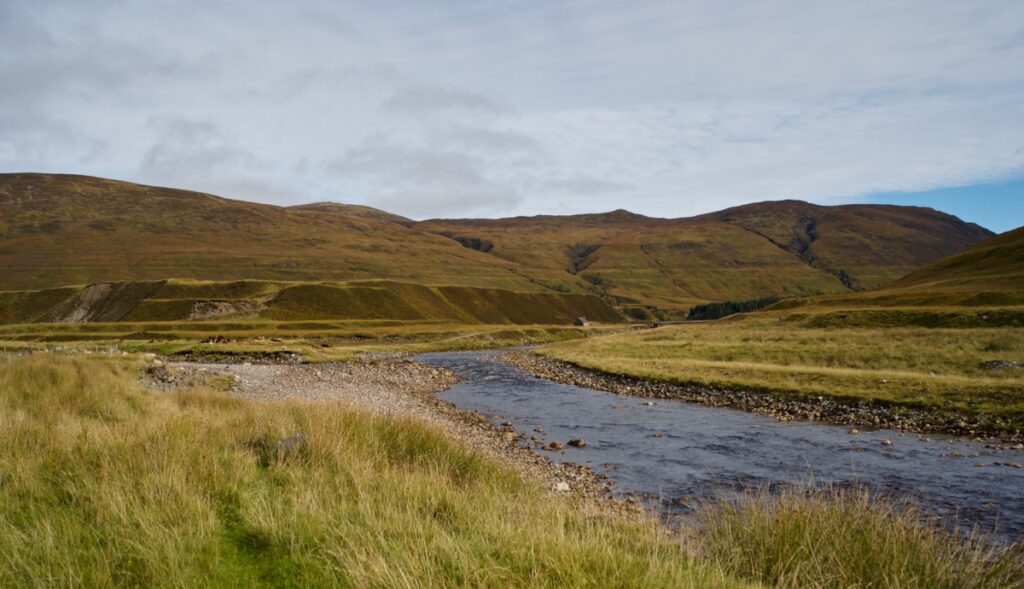
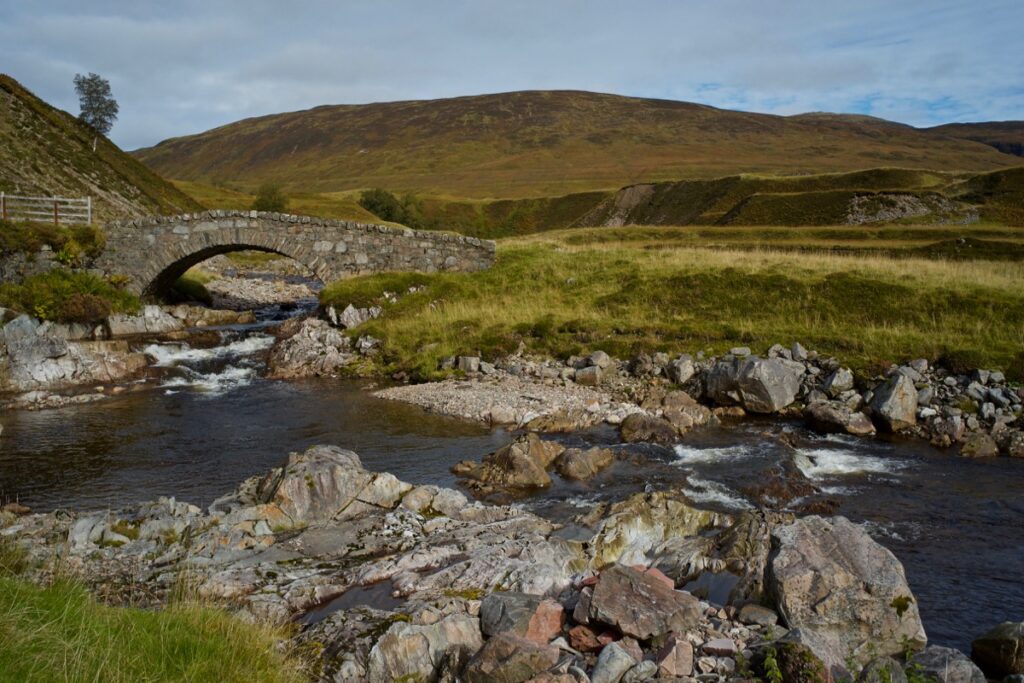
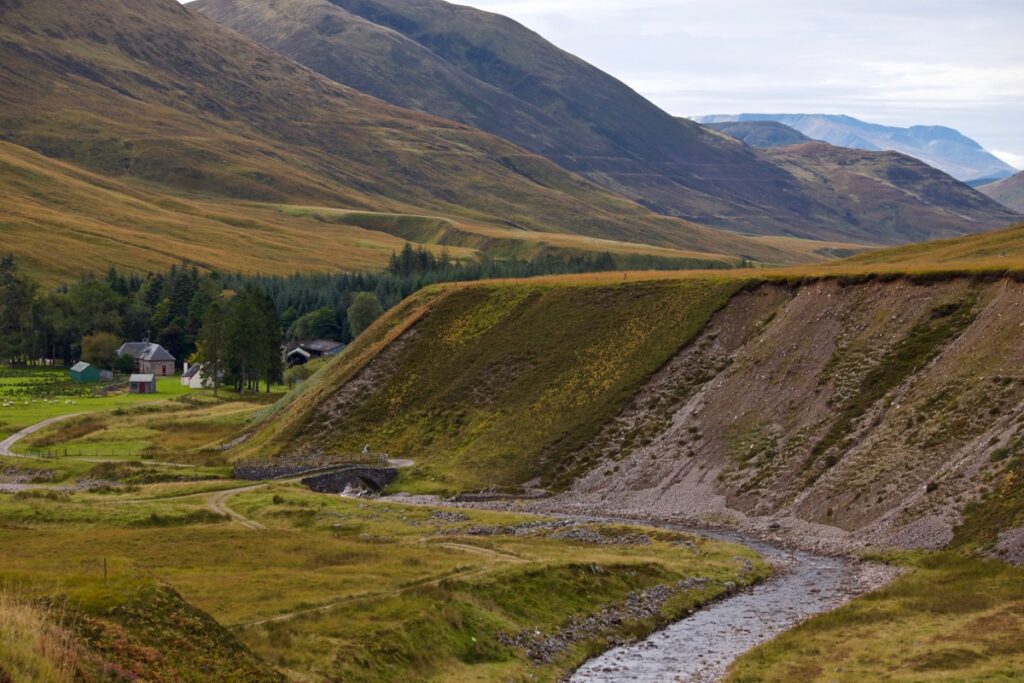
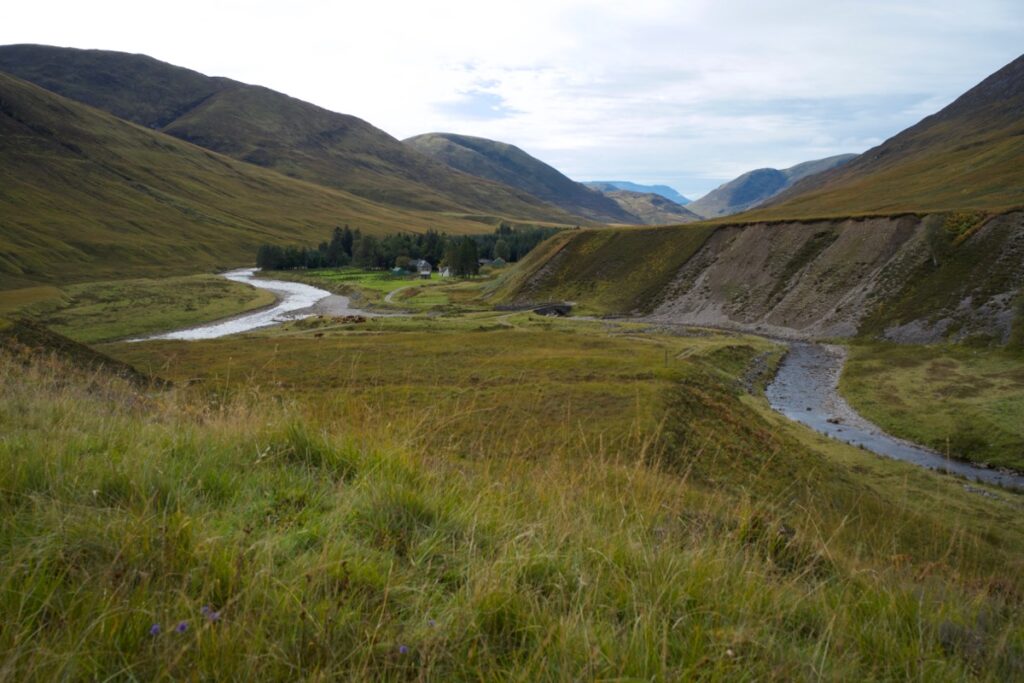
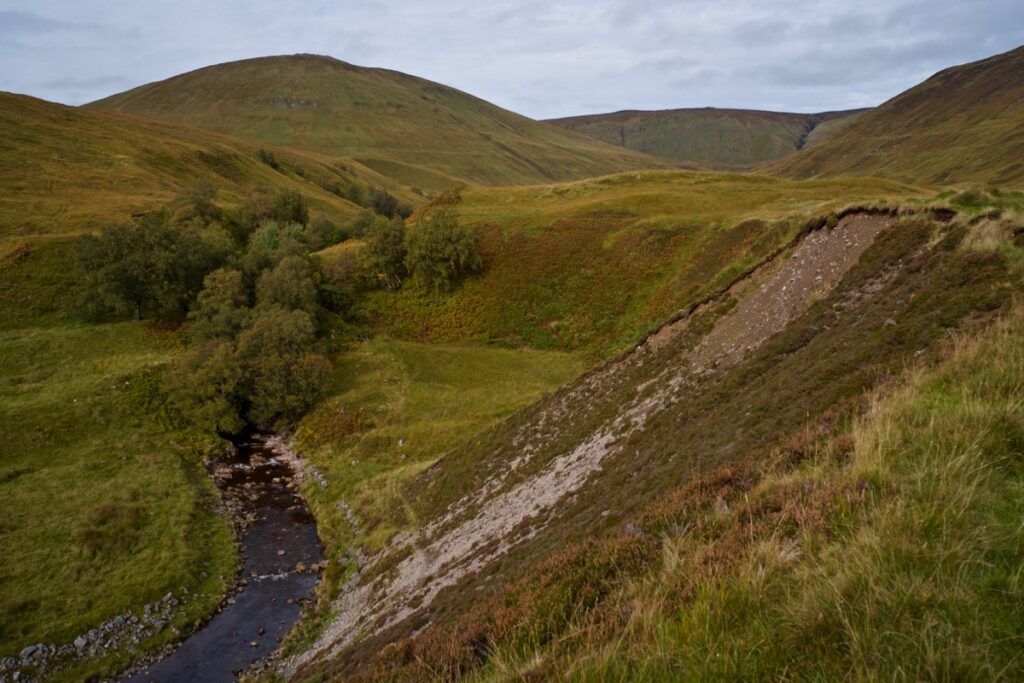
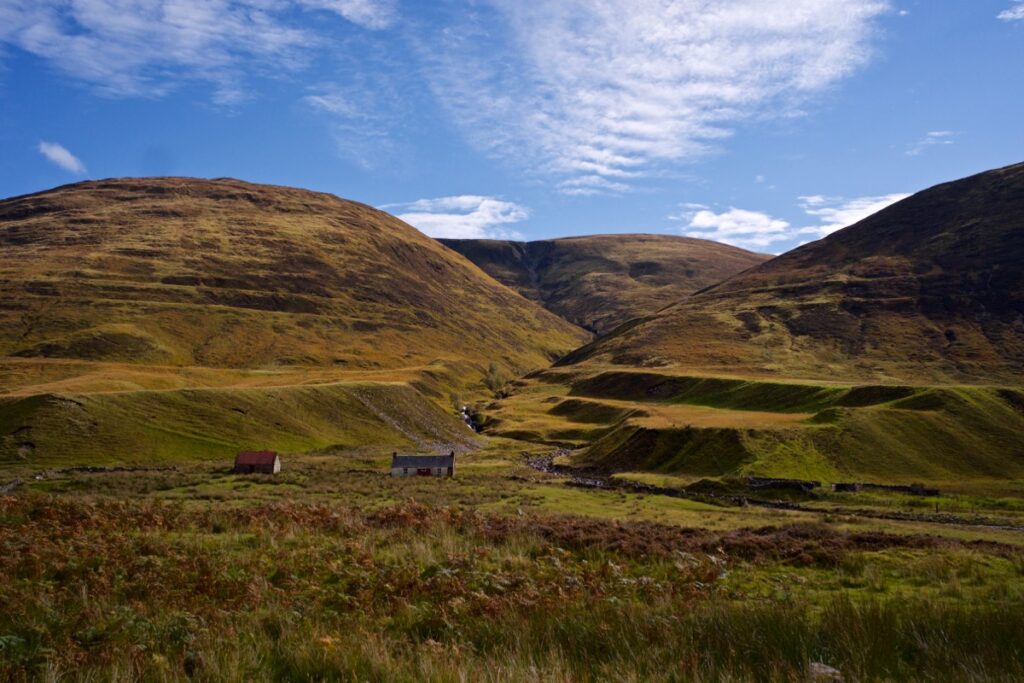
Another alluvial fan, bisected by a river, with the ‘roads’ seen above
We could hear a red deer stag roaring from the far hillside. The sound carried across to us with such clarity that he seemed much closer. I found him with binoculars: crowned with a fine set of antlers, he was half-way up the slope and making his way slowly along it, accompanied by an entourage of hinds. He wasn’t that fussed about glacial lakes. I imagined him using the parallel roads as a conveniently level path upon which to make his stately progress, like a conquering monarch returning home triumphant from the field of battle. An echo of Fionn MacCumhaill, perhaps, steadfast and defiant, eternally declaring his passion and his power.
– – –
Footnote:
In the 18th and 19th centuries the parallel roads of Glen Roy perplexed hundreds of visitors, including the great Charles Darwin who believed that they had been caused by rises in sea level. The puzzle was solved by a brilliant Swiss scientist, Louis Agassiz, who was the first to suggest that glaciers had been present in Scotland. You can read more in my blog post about Glen Roy for the Royal Scottish Geographical Society.
Reference and further reading:
- Douglas Peacock, John Gordon, Frank May, Glen Roy – a Landscape Fashioned by Geology (British Geological Survey and Scottish Natural Heritage)
- Alan McKirdy, John Gordon & Roger Crofts, Land of Mountain and Flood – the Geology and Landforms of Scotland
- The Geological Society
Images © Colin & Jo Woolf

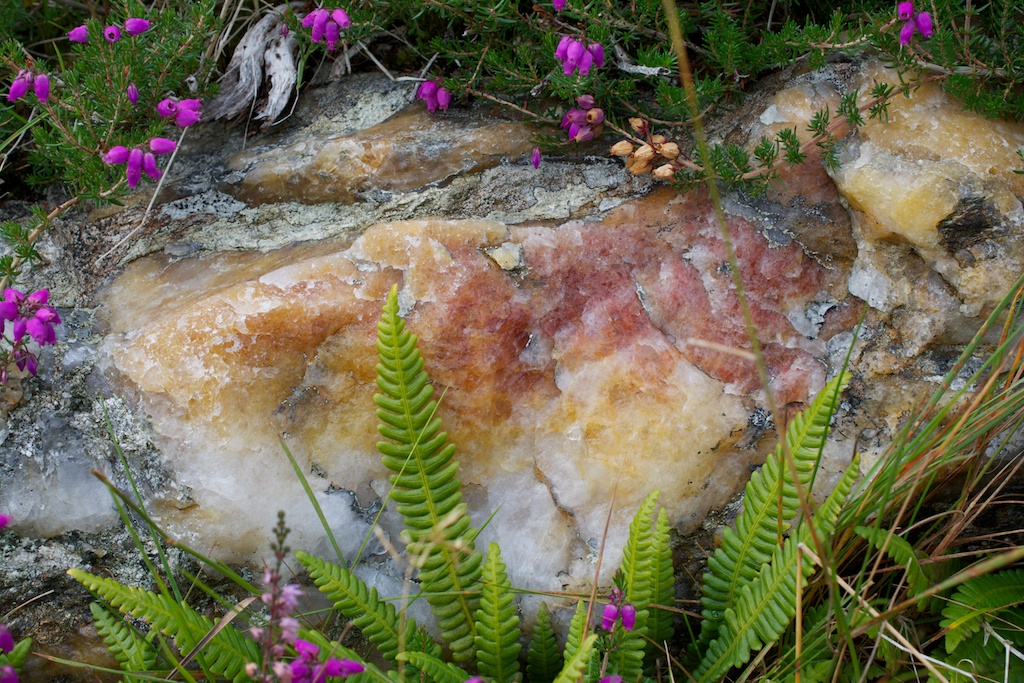
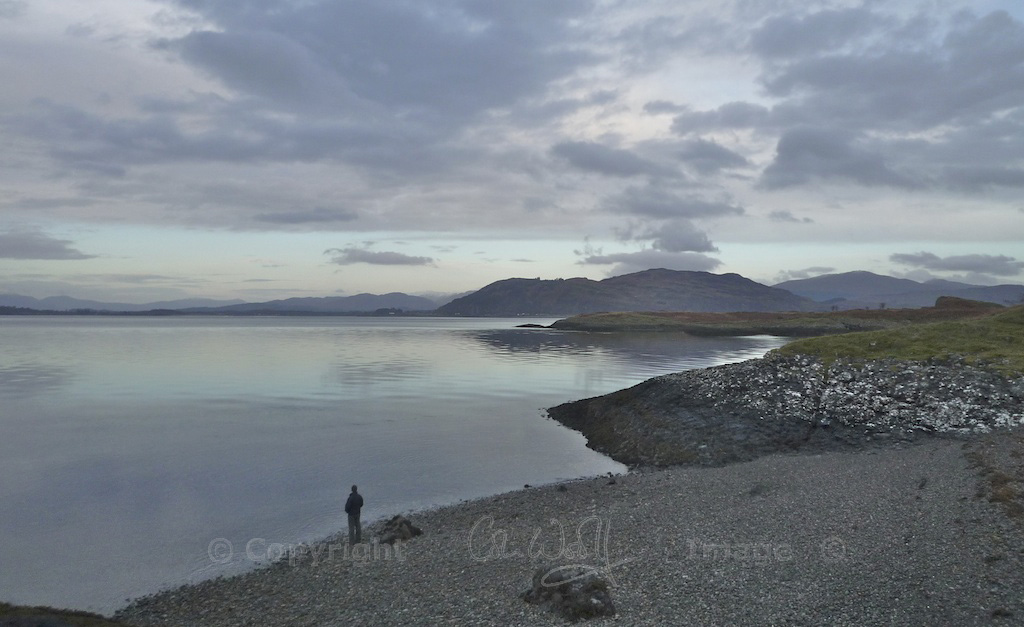
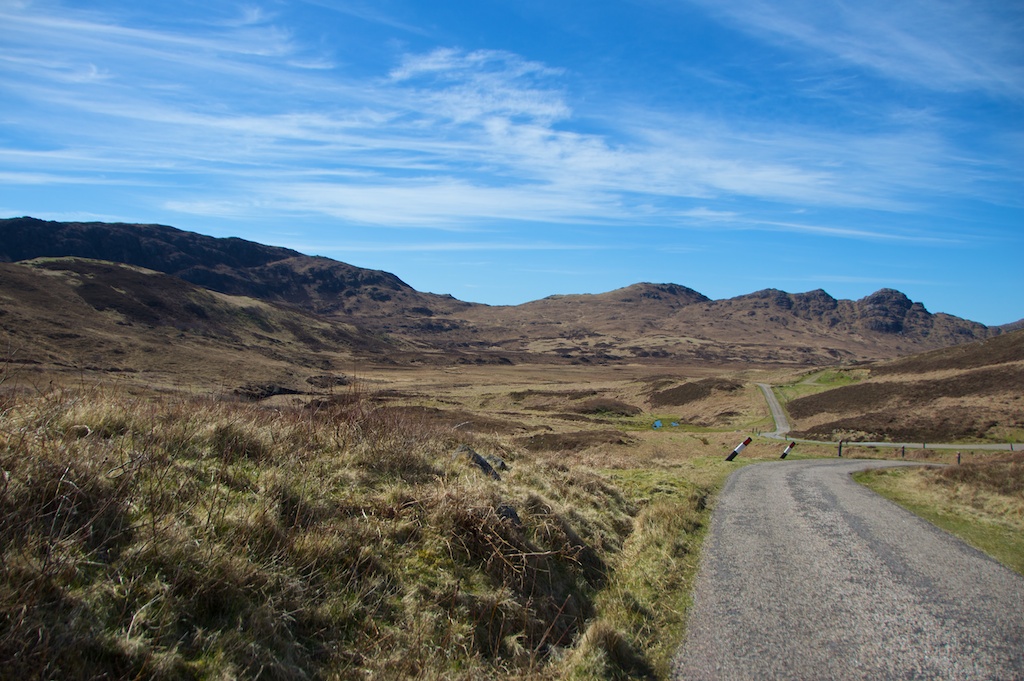
18 Comments
Finola
Great photos and account. I lived and worked for several years along the Peace River in northern British Columbia and we had parallel roads too, except we called them The Breaks. There’s a town in BC called Agassiz – I believe members of the same family settled there. Oddly, Louis turned out to be anti-science and racist, but that’s another story.
Jo Woolf
Thank you, Finola! I’d never heard of the ‘breaks’ in British Columbia. Were they on a similar scale, or bigger? Re. Agassiz, I’ve come across that attitude before with scientists of that era. Regarding his anti-science views, it’s interesting to compare the attitude of James Croll, who was in the same field of study – he introduced theories that shattered the idea of a Biblical flood, but still managed to retain a deep Christian faith.
Richard Miles
Fascinating information Jo Woolf and great photos of the beautiful Scottish landscape.I am half Scottish on my mother’s side,so I am very interested in the west highlands in particular where my great grandfather was a Shepheard and spoke mainly Gaelic .You write well and I always look forward to your blogs,keep them coming.
Best wishes
Richard Miles
Jo Woolf
Thank you very much, Richard! Interesting to hear about your family connections in the west Highlands. Your great grandfather must have been a very hardy soul!
Ashley
Another fascinating post, Jo! I was unaware of the ‘parallel roads’ possibly because I’ve not visited the north and west of Scotland. Thank you for this clear explanation of their origins. Enjoy your Sunday! ??
Jo Woolf
Thanks, Ashley! I’d heard of them but I’d always thought they were somewhere way up in the north-west – I just didn’t connect with the name Glen Roy even though it was staring at me! We did enjoy exploring the Glen – the features are on such a dramatic scale.
davidoakesimages
Love it…. I much prefer to believe the myth and legend than the facts ??
Jo Woolf
I’m totally with you there, David!
Richard Carter
I’ve long wanted to visit the parallel roads because of their Darwin connection. Darwin had found masses of evidence of gradual uplift in South America during the Beagle voyage, but wrongly applied the same explanation to Glen Roy. He was subsequently dreadfully embarrassed at his incorrect hypothesis, which he described as a ‘blunder’. I’ve just covered the topic briefly in the book I’m writing about my hero.
Jo Woolf
I’ve recently read about Darwin’s mistaken theory, and his determination in holding on to it! ‘Horrid shelves’, he called them, in the end – poor guy! Thanks Richard, and good luck with your writing!
Luffy
Fascinating! Thank you ?
Jo Woolf
Thanks for your comment! Glad you enjoyed it.
greg-in-washington
Beautiful countryside. I always enjoy seeing more of Scotland.
Jo Woolf
We love exploring it too, Greg – there’s so much of Scotland we have yet to see!
Robert Turner
A wonderful article. I live on what would have been the shores of Lake Agassiz in Canada . The effects of the glacier and mega lake dominate our landscape to this day. It interesting to hear a bit of glacial history from Scotland. Thank you.
Jo Woolf
Thank you, Robert! That’s amazing, to hear that you live by Lake Agassiz! It must be a fabulous landscape.
Judy Lowstuter
Enjoyed this so much! I was fortunate to have made the same turn off in Roybridge to the Ice Age Landscape, a sign I’d passed many times before but without sufficient time to explore. It’s been several years and I long to go back. Your adventure and photographs have given me the “Armchair Traveler” experience to soothe my soul on a cold winter day! Thank you Jo.
Jo Woolf
Thank you, Judy, I’m really glad you enjoyed your armchair visit! I think it would have been pretty grim there today – very wet and windy – so you were in the best place. I’m so glad we made the effort to go there, it’s just extraordinary!